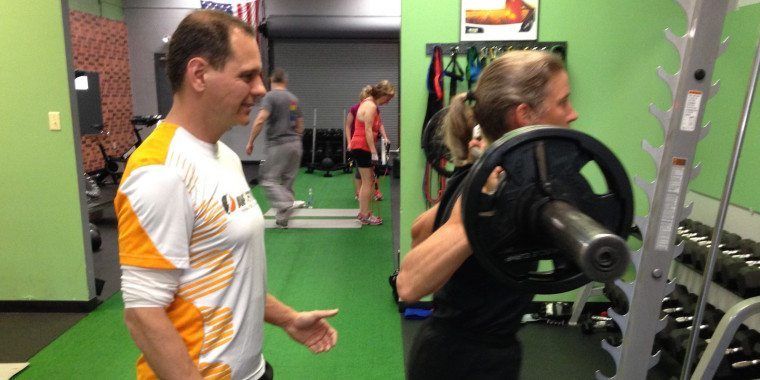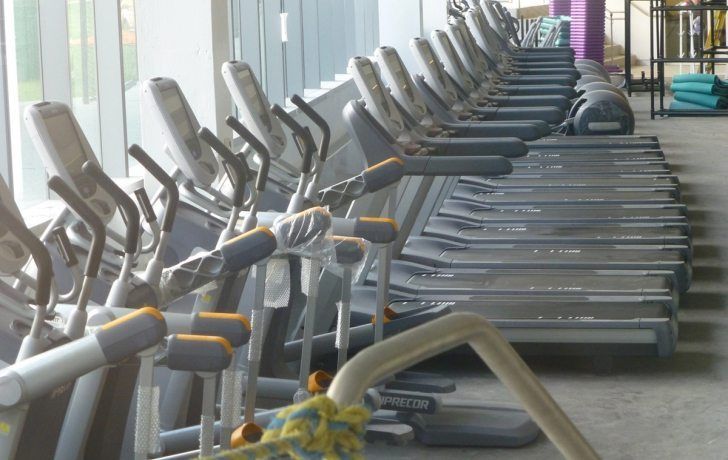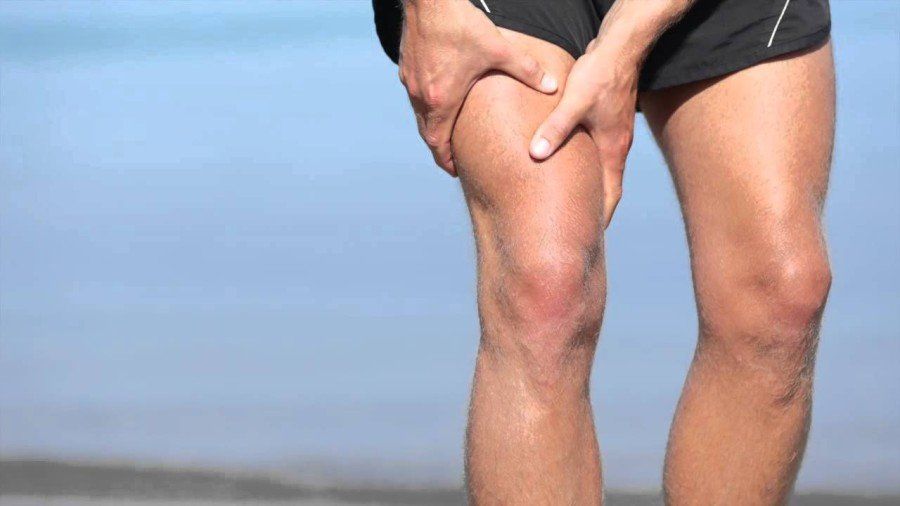Any type of activity that places unaccustomed loads on muscle may lead to what is known as delayed onset muscle soreness. This type of soreness is different from acute soreness, which is pain that develops during the actual activity. Delayed soreness typically begins to develop 12-24 hours after the exercise has been performed and may produce the greatest pain between 24-72 hours after the exercise has been performed.
While origins of the soreness and accompanying symptoms are complex, it is well-established that many types of physical activity can cause delayed soreness, according to the American College of Sports Medicine. Most believe soreness develops as a result of microscopic damage to muscle fibers involved in the exercise. This type of damage likely results from novel stresses that were experienced during the exercise.
Related: 10 Things Not To Do During A Workout
One common misconception about delayed onset muscle soreness is that it is due to lactic acid accumulation, but lactic acid is not a component of this process. The soreness appears to be a side effect of the repair process that develops in response to microscopic muscle damage.
Examples of activities that are known to cause delayed onset muscle soreness include:
- Strength training exercise
- Walking down hills
- Jogging
- Step aerobics
- Jumping
Activities which cause delayed onset muscle soreness all ones that cause your muscles to lengthen while force is applied, or what is known as eccentric muscle action. Examples of eccentric muscle actions include the lowering phase of a bicep curl exercise or the lengthening of the thigh muscles while the limb brakes against your body’s momentum as it walks or jogs down a hill. Jogging or running on a flat surface can also elicit delayed onset muscle soreness symptoms for those who are unaccustomed to this type of activity.
The severity of soreness depends on the types of forces placed on a particular muscle. Running down a hill will place greater force on the muscle than walking down the same hill, so any soreness that develops will likely be greater after running down a hill. A high number of repetitions will cause more damage and soreness than a low number of repetitions. As a result, it is recommended that you work your way gradually into a new exercise program.
All people are susceptible to delayed onset muscle soreness, even those who have been exercising for years. However, the severity of soreness normally becomes less as your body becomes adapted to the work it regularly performs. Even just a single bout of soreness-producing exercise actually develops a partial protective effect that reduces the chance of developing soreness in that same activity for weeks or months into the future.
Does Delayed Onset Muscle Soreness Only Cause Soreness?
There are numerous characteristics of delayed onset muscle soreness beyond local muscle pain. According to the American College of Sports Medicine, some of the most common symptoms include:
- Swelling of the affected limbs;
- Stiffness of the joint accompanied by temporary reduction in a joint’s range of motion;
- Tenderness to the touch;
- Temporary reduction in strength of the affected muscles (lasting days);
- In rare and severe cases, muscle breakdown to the extent that the kidneys may be placed at risk; and
- Elevated creatine kinase (CK) enzyme in the blood, signaling muscle tissue damage.
Seeking Medical Treatment
Delayed onset muscle soreness symptoms do not typically necessitate the need for medical intervention. But if the pain level becomes debilitating, if your limbs experience heavy swelling or if your urine becomes dark, then medical consultation is advisable.
Prevention
One of the best ways to reduce the severity of delayed onset muscle soreness is to progress slowly in a new program. Allowing the muscle time to adapt to new stress should help to minimize the severity of symptoms, but it is unlikely that soreness can be avoided altogether. It is also important to allow the muscle time to recover from work that produces soreness, and participating in the same exercises on subsequent days should to be done judiciously.
Related: 8 Dangerous Exercise Habits To Avoid
Proper warmup is also important in preparing the muscle for the types of forces that may cause damage, but there is little evidence that warm-up will be effective in preventing delayed onset muscle soreness symptoms. Stretching is sometimes done before exercise, but it is better to stretch after the body is warmed up and after exercise. Stretching has not been shown to reduce or prevent symptoms of delayed onset muscle soreness, but delayed onset muscle soreness should last only a few days (usually 3-5 days) and the involved muscles will be better prepared for future bouts of the same type of exercise.
Discontinuing Exercise
Often, symptoms will diminish during activity, but they will return after recovery. Performing exercise while experiencing severe symptoms may make matters worse. On the other hand, light activity should not impair your recovery. However, there is also not much evidence that this will hasten your recovery. If you find that your symptoms make it difficult or too painful to perform the activity, then it is advisable to refrain from the activity for a few days and return to the activity as symptoms subside.
Easing Symptoms
There is little evidence that treatment strategies will hasten your recovery and ability to return to normal function. If the primary goal is to reduce the symptoms, then treatments such as ice pack application, massage, tender-point acupressure, and oral pain relief agents may be useful in easing pain. It is important to be aware that pain reduction does not represent recovery. Rather, these treatments may only be effective in reducing symptoms of pain, but underlying muscle damage and reduced function may persist.
No Pain, No Gain?
It is unlikely that you will avoid soreness altogether when beginning a new exercise program. However, pain does not need to be present to achieve gains in fitness status, and pain may indicate a need to reduce or refrain from an activity. While eccentric loading of muscle to achieve gains in muscle size appears to be important, gains in strength will occur without overemphasizing the eccentric component of a weightlifting exercise.
Pain that occurs during exercise (i.e., acute) signals a problem with the exercise (too intense, bad form, etc.) and should be halted before muscle or joint damage occurs












